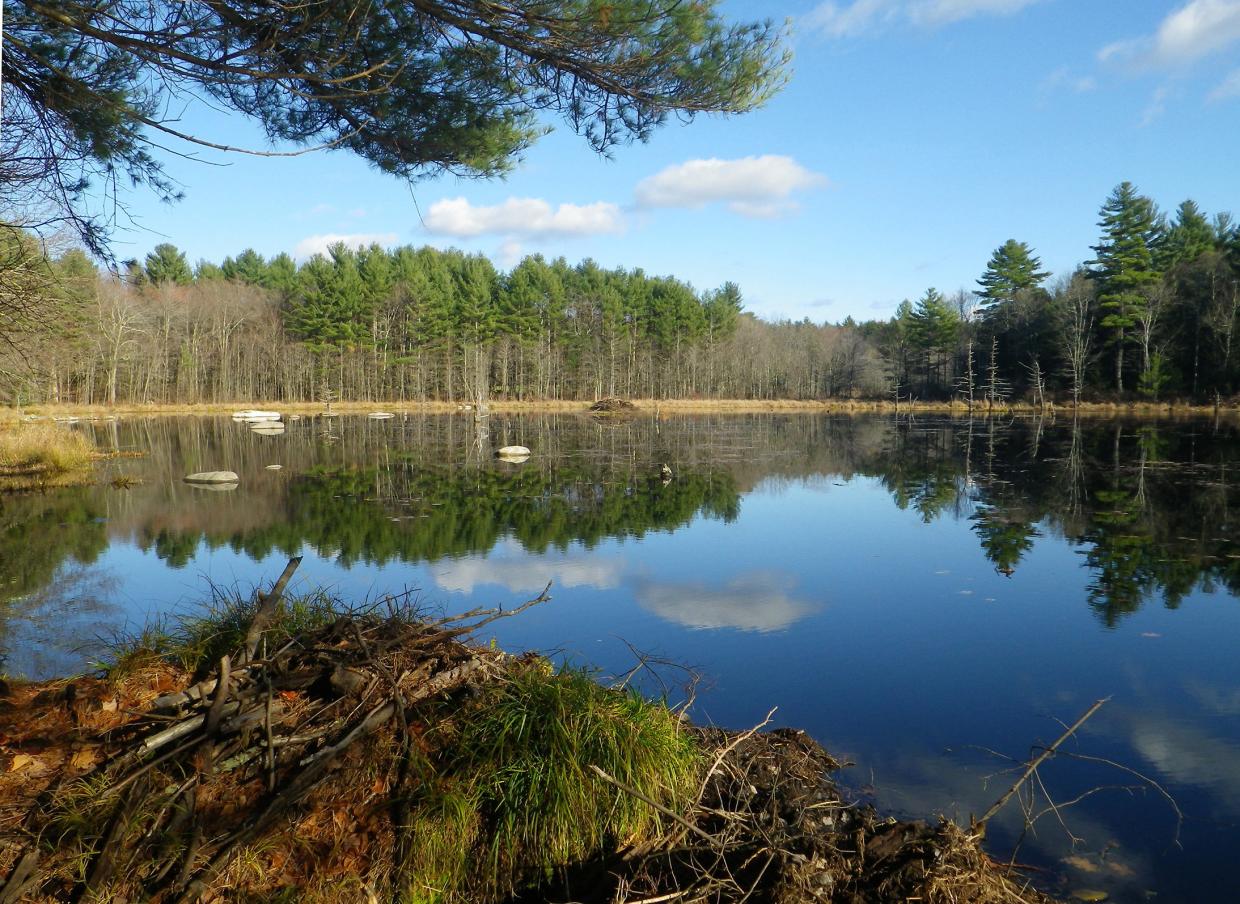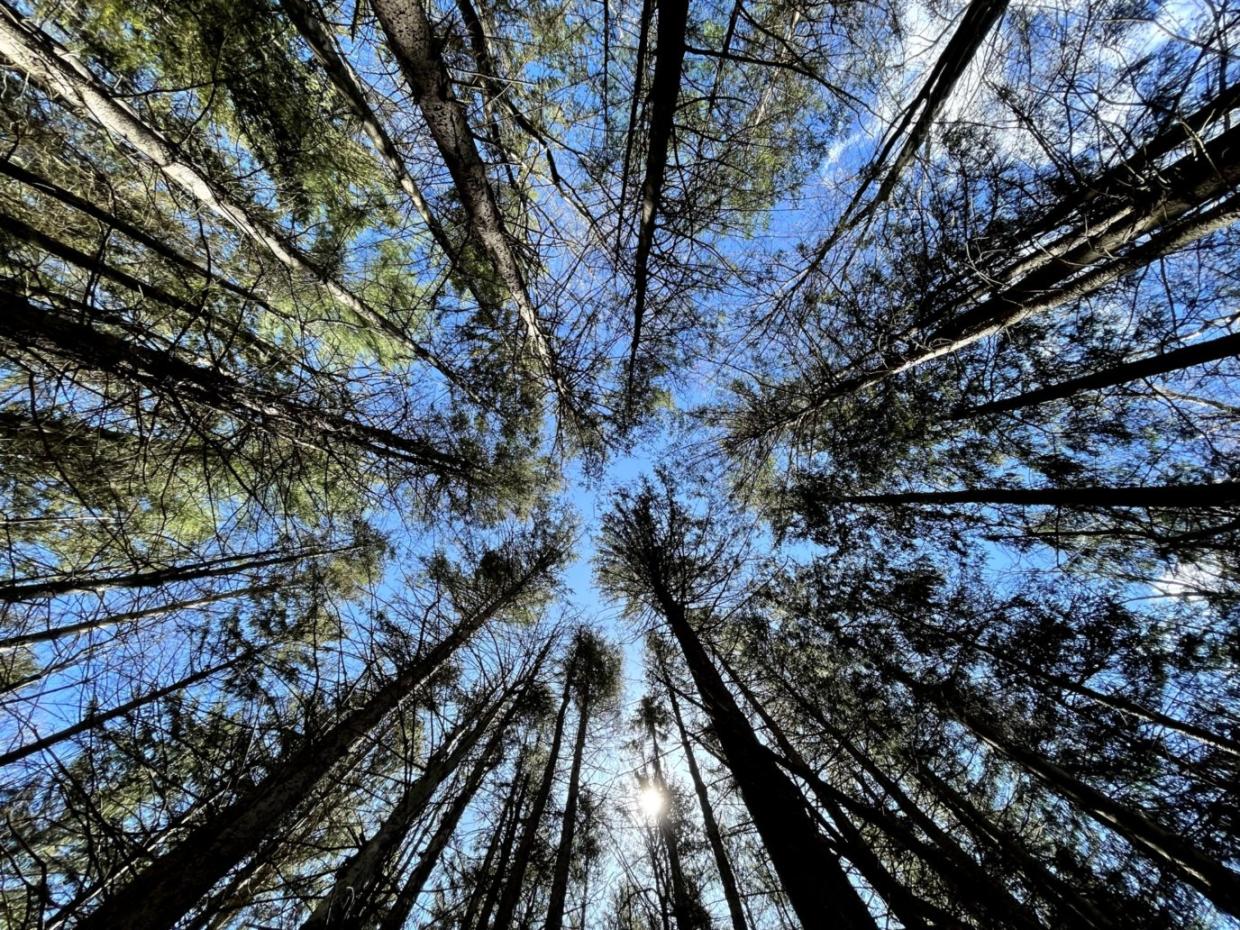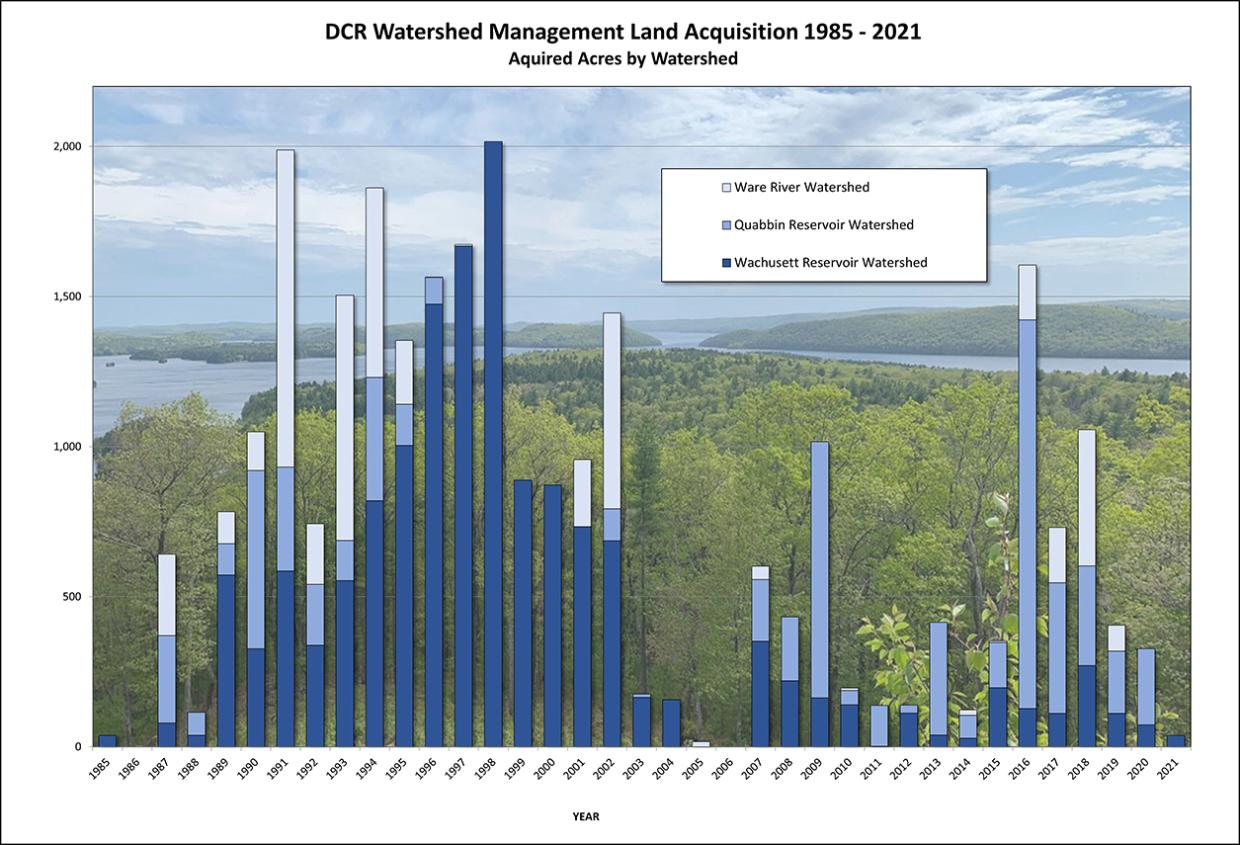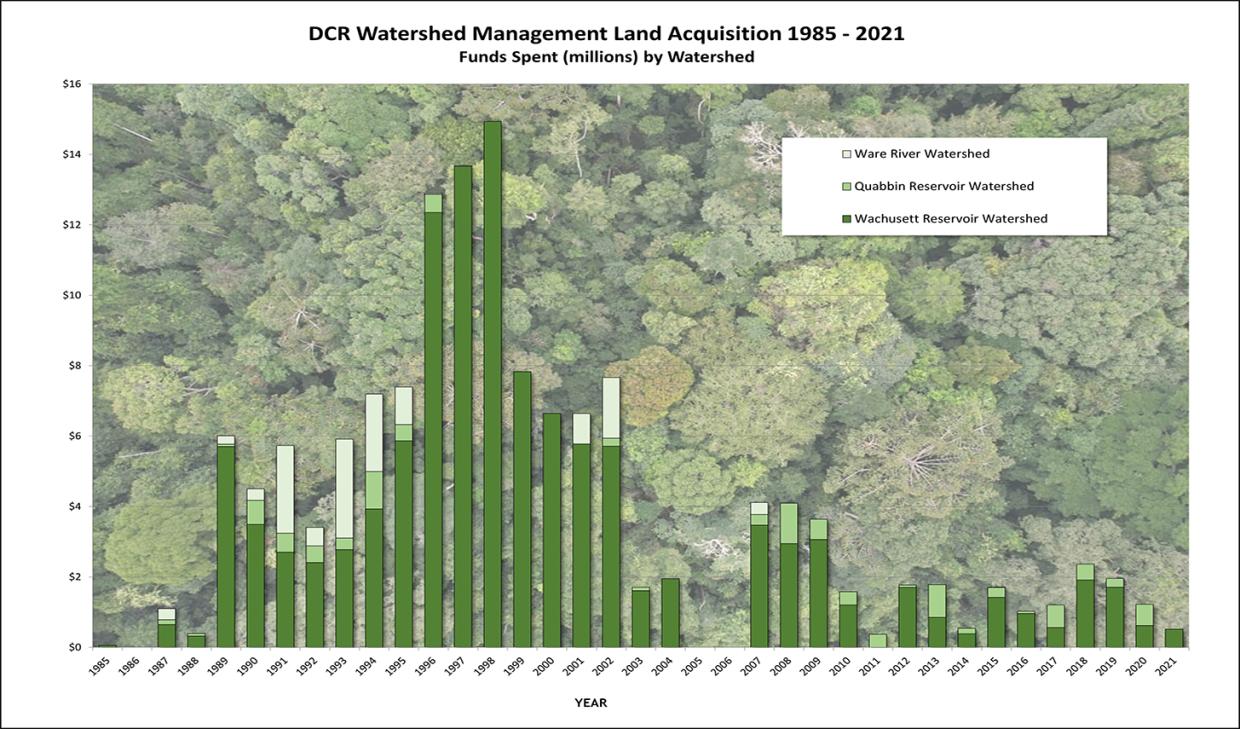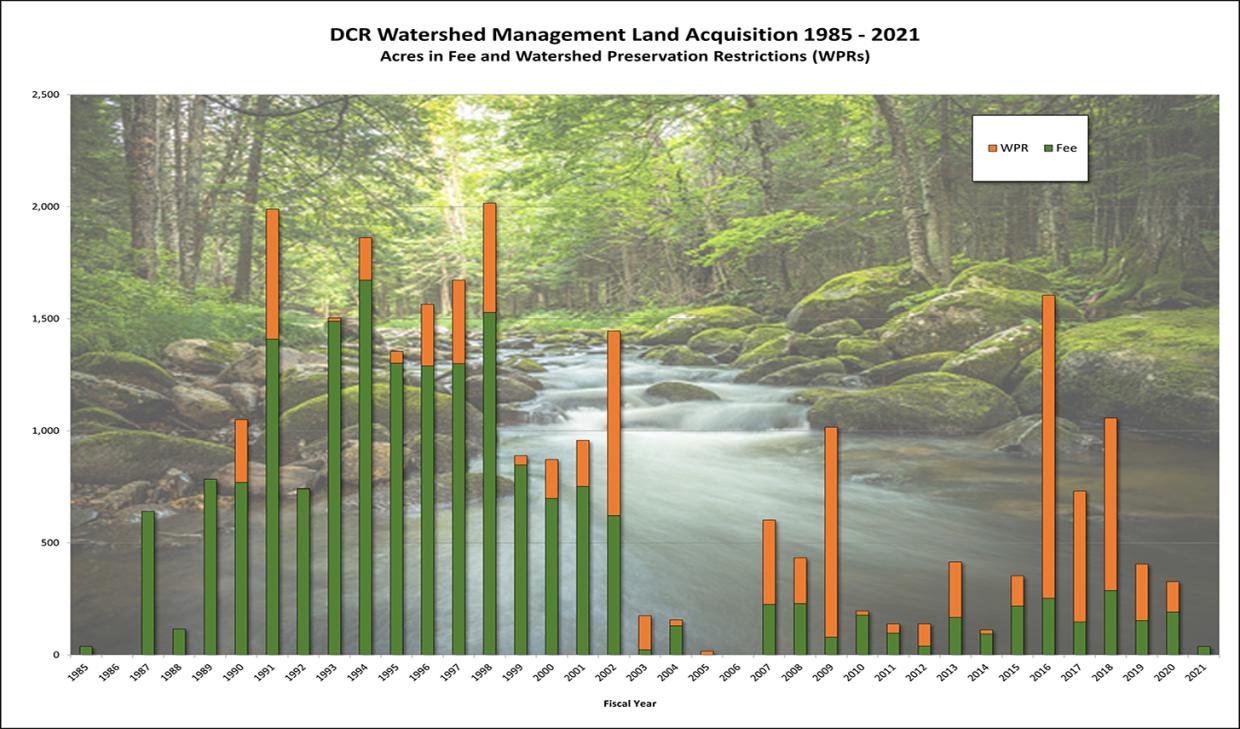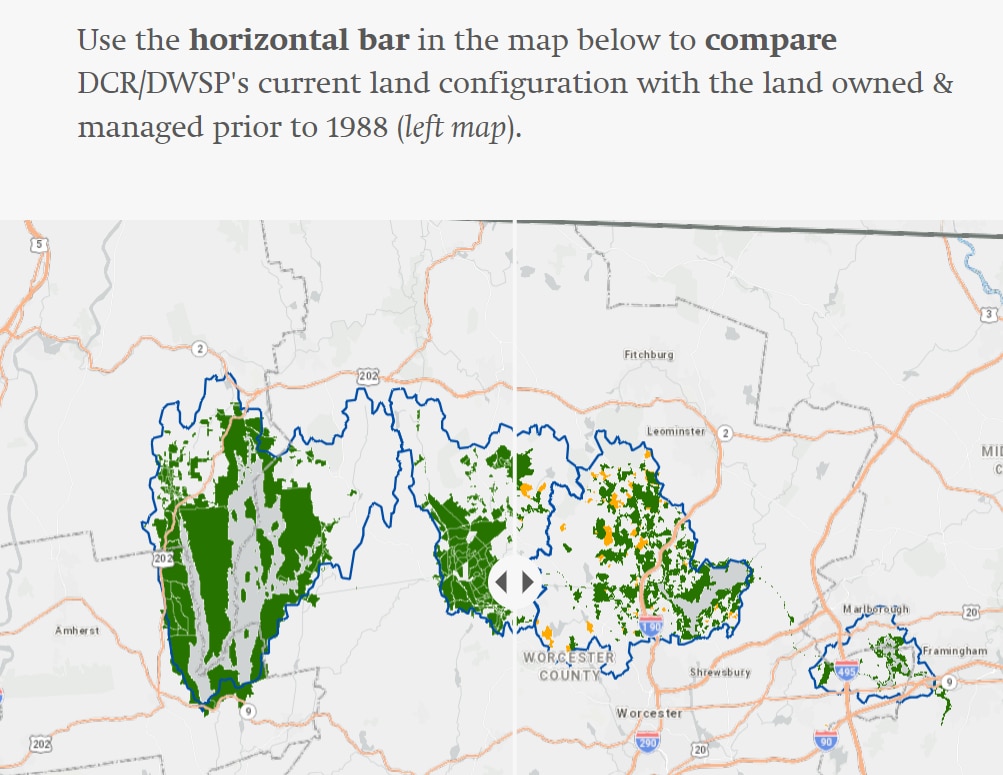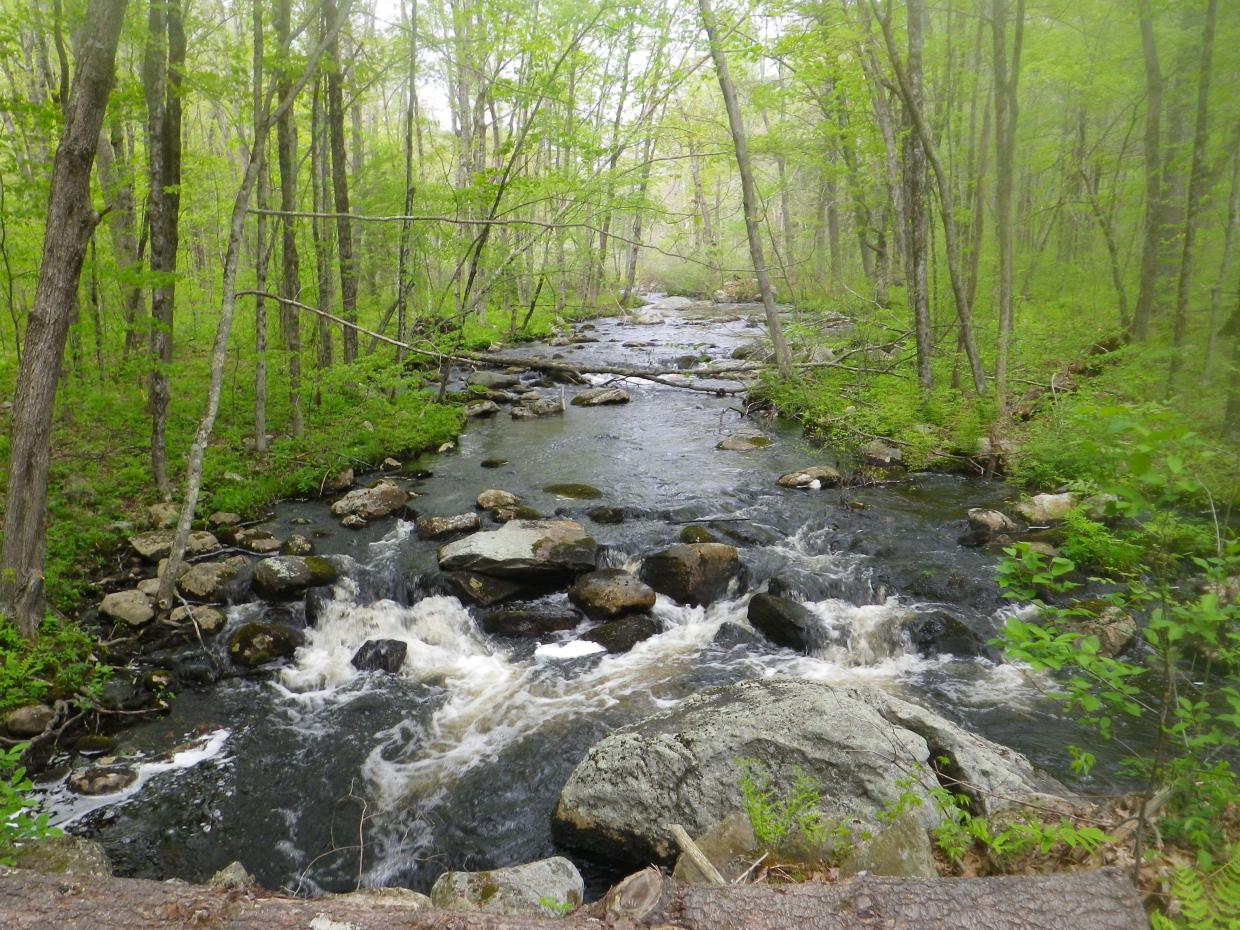Watershed Land Acquisition
The Division of Water Supply Protection works with willing land owners to buy property throughout the Wachusett Reservoir, Quabbin Reservoir, and Ware River watersheds. These purchases can be for complete transfer of ownership (in fee) or the private property owner can enter into a Watershed Preservation Restriction (WPR), where they retain ownership of the property, but deeded terms are established that prohibit some activities that may be detrimental to water quality.
The Watershed Land Protection Coordinator works with landowners, realtors, land trusts, and other government agencies to identify and negotiate land protection purchases. All transactions are with willing sellers and terms are mutually agreed upon by both the seller and the state.
Additional Resources
-
Open PDF file, 1.39 MB, DCR Watershed Road Map to Land Conservation (English, PDF 1.39 MB)
History
During construction of the Wachusett Reservoir in 1905, the Commonwealth purchased 4,170 acres of land to be flooded and 5,608 acres of watershed land, or just 7.9% of the total watershed excluding the reservoir. Thirty years later, when acquiring lands in the Quabbin Reservoir and Ware River watersheds, state officials realized the mistake of not protecting significantly more of the watershed. About 50,000 acres (42%) of land in the Quabbin Reservoir watershed and 16,500 (27%) acres of the Ware River watershed were purchased for watershed protection. The next 50 years saw only limited and sporadic land acquisition in the three watersheds, usually triggered by impending development on critical parcels near the reservoirs.
Passage of federal drinking water regulations in the 1970s and 1980s, and in particular the Surface Water Treatment Rule in 1989 requiring filtration of all but the most highly protected water sources, made state authorities realize that there needed to be control over a larger part of the watershed system, particularly in the Wachusett Reservoir watershed. For the past 30 years, DWSP has conducted the watershed land acquisition program with the goal of protecting sensitive areas from development and restoring and maintaining stable forest cover on much of this land.
Importance of Permanently Protecting Forest Land
Given the clearly established benefits of forested land to water quality, preserving forest cover in the watershed system has been fundamental to DWSP’s land acquisition strategy. Simply put, watersheds with more land in forest tend to have better water quality. By protecting forested, relatively undisturbed lands, DWSP proactively counters potential threats to water quality that would result from development of these lands. Benefits to the source water supply system used by over 2.7 million people include preventing urbanization-related water quality degradation by:
- Bacteria
- Pathogens
- Nutrients
- Sediments
- Heavy metals
- Other pollutants associated with waste management
- Increased and more rapid storm water discharge caused by expanding impervious surface area.
Watershed Land Acquisition and Climate Change
Land protection plays a critical role in helping the Commonwealth meet its climate change mitigation and resiliency goals. Land acquired outright joins DWSP’s vast network of lands which are sustainably managed as structurally and compositionally diverse forests, making them more resilient to:
- Severe weather events
- Temperature and precipitation changes
- Outbreaks of disease
- Invasive plant and pest infestations.
Land protected using Watershed Preservation Restrictions remain privately owned and managed but are subject to restrictions that prevent the land from being developed and forests from being converted to other land uses. Permanently protecting these forested landscapes helps to sequester carbon and prevent carbon emissions that come with land being developed. To learn more about the many other benefits of permanently protecting forest land visit the DCR Watershed Forestry, Climate Resiliency, and Carbon webpage.
Ultimately, by permanently preserving forested landscapes, DWSP’s land protection program not only helps ensure the longevity and health of our drinking water supply but also ensures that the Wachusett Reservoir, Quabbin Reservoir, and Ware River watersheds will remain resilient to climate change for generations to come.
Additional Resources
DCR Watershed Management Land Acquisition Table and Charts
| Watershed | Acres Fee | Acres WPR | Total Acres | Awards | % of Total Acreage | % of Total Awards | Average Cost/Acre |
|---|---|---|---|---|---|---|---|
| Wachusett | 12,313 | 2,700 | 15,013 | $119,859,136 | 55% | 83% | $7,983 |
| Ware | 3,696 | 1,620 | 5,316 | $12,961,150 | 19% | 9% | $2,438 |
| Quabbin | 2,554 | 4,570 | 7,124 | $10,908,600 | 26% | 8% | $1,531 |
| Total | 18,563 | 8,891 | 27,454 | $143,728,886 | 100% | 100% | $5,235 |
| % of acreage | 68% | 32% |
Land Acquisition Success: 1985 to Present
DCR's Land Acquisition Program has been a model of success. Since 1985, 27,000 acres have been protected, increasing the area under Water Supply Protection Control in the Wachusett Reservoir watershed from 8% to 28% of the watershed area. This achievement is one of the significant factors in the MWRA's ability to maintain a filtration waiver.
Land Acquisition StoryMaps
StoryMaps are great communication tools - they combine maps and narrative story telling with pictures, videos and more. DCR has created StoryMaps highlighting the agency's recent land acquisitions.
Program Management
All DWSP land transactions are guided by an internal Land Acquisition Panel (LAP), consisting of DWSP and MWRA staff members with a range of watershed management knowledge. LAP's review of all potential projects ensures the most effective outcome for limited land acquisition funds. If funding for the project is coming from the MWRA, then their Board of Directors must also approve the purchase.
LAP meets regularly to review proposed acquisitions. Project attributes, such as proximity to the reservoir and tributaries, topography, zoning, aquifers, habitat protection, climate change impacts, and threats from development are considered when prioritizing projects. LAP utilizes a wide range of information at their disposal, including geospatial models, remote sensing data, site review, and professional judgment, to determine which projects are worth pursuing.
While land acquisition funds are used in each of the system’s watersheds, the highest priority for protection has been the Wachusett Reservoir watershed, which is closest to the metropolitan Boston consumers yet contains the lowest percentage of protected sensitive land.
Funding
The DWSP Watershed Land Acquisition Program has been funded from three state bonds and MWRA fiscal year budget allocations through their Capital Improvement Program. These include Commonwealth open space bonds of $3 million established in 1983, $30 million established in 1987, and a $135 million bond established by the Watershed Protection Act of 1992. All of the bonds since 1985 have been paid for by the MWRA. Recent funding has come directly from MWRA budget allocations; the program is currently funded at $1 million dollars per year.
Other funding opportunities are also pursued to support the program; for example DWSP has obtained $4.375 million in federal Forest Legacy ("Q2W") grants and $700,000 in Executive Office of Energy and Environmental Affairs Landscape Partnership funds.
Property owners have taken advantage of both federal and state tax incentive programs to donate their property or make a "bargain sale" to DWSP. There is ongoing communication with local and regional non-profit organizations to identify situations where DWSP can partner with these groups to permanently protect open space.
